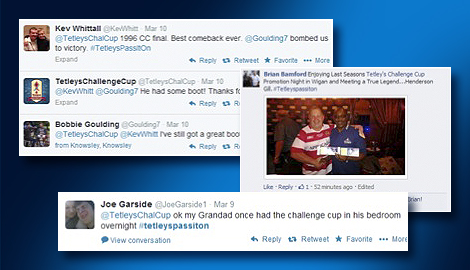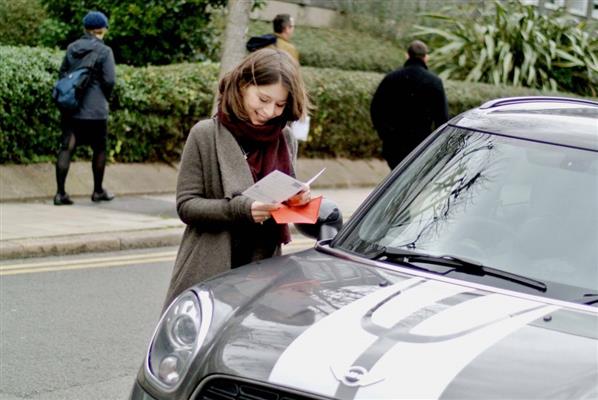It used to be all about the big broadcast. An advert televised during prime-time was capable of achieving unparalleled levels of exposure. The brand name was heard, the product was seen. If the advert made a significant impact, it could generate substantial payback. It was simple. But then the internet was invented, and soon social networking sites commanded the attention of more and more of a brands traditional audience. Digital media offered up new avenues for advertising, many less expensive and more focused than that of traditional broadcasting. The internet provided a platform for experimentation, and through this, original styles of advertising began to emerge. This type of digital dominance provokes a significant question: what, if any, is the purpose, or indeed the place, for the traditional broadcast?
Social media marketing is the proverbial word of mouth for the digital age. It is all about getting people talking, and making sure your brand is a part of the dialogue. Tetley’s Beer and Land Rover have both recently attempted to stimulate a conversation with their consumers. Tetley’s, as a sponsor for Rugby League, have asked fans to share their match stories. The campaign recognised the sense of community already intrinsic in sport, and attempted to recreate it into a digital dialogue, with their name as the signature. Land Rover asked people to upload photographs of their outdoor adventures, under the hashtag #hibernot. This online discussion, led by the consumer, perfectly reinforced the mentality of the brand without needing to explicitly address it.
Tetley’s, as a sponsor for Rugby League, have asked fans to share their match stories. The campaign recognised the sense of community already intrinsic in sport, and attempted to recreate it into a digital dialogue, with their name as the signature. Land Rover asked people to upload photographs of their outdoor adventures, under the hashtag #hibernot. This online discussion, led by the consumer, perfectly reinforced the mentality of the brand without needing to explicitly address it.
It is clear that social media marketing is reliant on an active consumer. If the consumer chooses not to engage, the campaign will lose momentum, and the brand exposure will be lost. In this sense, traditional broadcasting has the upper hand. It succeeds in providing national brand coverage without being dependent on the actions of the viewer. However, while a prime-time advert is aired to millions of people, is there any guarantee that it is being heard? Social media marketing is certainly unpredictable, but if the campaign is able to gain traction, the response is an authoritative one. It is not only able to reach a diverse audience, but it also delivers an audience who is actively responsive to the brand.
 MINI is another brand who have exploited the scope of social media. In an attempt to get their name on the newsfeed, and in conjunction with Valentine’s Day, they took to the streets and placed love notes on MINIs’ around the country. With the hashtag #MINIPhwoar, they encouraged people to speak up, and share their tokens of affection.
MINI is another brand who have exploited the scope of social media. In an attempt to get their name on the newsfeed, and in conjunction with Valentine’s Day, they took to the streets and placed love notes on MINIs’ around the country. With the hashtag #MINIPhwoar, they encouraged people to speak up, and share their tokens of affection.
Snickers also attempted to get their name ‘trending,’ but this time by enlisting the help of celebrities. They asked famous people to tweet out-of-character statements, followed by a picture of themselves eating a Snickers, and the slogan ‘You’re Not You When You’re Hungry.’ The campaign was so infectious it spread to 58 markets across the world.
These types of marketing stunts are suited to the culture of social media. They are spontaneous and surprising, and therefore, fuel online conversation. The brand gains positive exposure and product promotion at the hands of its own customers. Marketing teams and agencies alike are now restructuring their staff to suit this change in marketing. This is perhaps the best evidence to support the view that the role of broadcast advertising is changing. Companies are complimenting the growth of digital consumers by creating purpose-built roles. They are focusing on the results gained from online initiatives, and constantly trying to design new and innovative digital programmes. Agencies are adapting to suit the evolution of advertising, and traditional broadcast techniques are no longer a central part of the blueprint.
So, traditional broadcast advertising is not turning to static, but rather, is just being re-tuned. Social media marketing has certainly become the leading vehicle for advertising, but this does not mean that broadcasting must become redundant. It is still a powerful way to reach the consumer; it just needs to provide a way for the consumer to reach back. Broadcast advertising must be combined with social media if a campaign is to make a substantial, and lasting, impact. The two are not in competition with one another, but rather, are the perfect companions. One provides instant national exposure; the other helps to sustain and develop it. In other words, broadcast advertising puts the voice out there, and social media gives it greater volume.
This blog was written by haystackonline. Read more from them in our Clubhouse.
